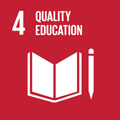- Docente: Giuseppina Paola Viscardi
- Credits: 6
- SSD: M-STO/06
- Language: Italian
- Teaching Mode: In-person learning (entirely or partially)
- Campus: Bologna
-
Corso:
Second cycle degree programme (LM) in
History and Oriental Studies (cod. 6813)
Also valid for Second cycle degree programme (LM) in Religions Histories Cultures (cod. 5890)
Second cycle degree programme (LM) in Philology, Literature and Classical Tradition (cod. 6690)
Second cycle degree programme (LM) in Archaeology and Cultures of the Ancient World (cod. 8855)
-
from Apr 08, 2026 to May 21, 2026
Learning outcomes
After completing the course, students are familiar with the main theoretical, methodological and technical tools of the historical-religious disciplines of the social sciences, which address the study of the history of religions of the ancient world with mastery of interdisciplinary methods and contents. They are able to evaluate religious phenomena and dynamics in local and global socio-cultural contexts, to identify connections, developments, persistence and transformations of religious phenomena and appreciate interaction between groups in complex societies. They have an understanding of the relevance of cultural-historical studies for historical enquiry and can identify the specific contribution that the historical sciences can make in addressing issues and problems of interest to the community, such as the critical promotion of the value of religious differences and religious pluralism. Also through direct involvement in seminar-type activities on some monographic topics (personal reading and analysis of ancient texts and modern studies), they have knowledge of the sources and problems linked to the study of religions of the classical world and the general characteristics of polytheism. They know how to use the language and tools specific to the discipline. They are able to update their knowledge and elaborate autonomous analytical perspectives, applying the methodologies of investigation to specific problems and documents and taking into account the scientific and international debate related to the discipline.
Course contents
Agency semi-divine: the figure and spaces of the daimon/demon from antiquity to the Middle Ages between religion, culture and society. Analysis and discussion of literary evidence and iconographic representations.
The course focuses essentially on the analysis of the presence, within ancient religious systems, of agencies or entities midway between the sphere of the divine and that of the sensible that were recognized as having the power to influence humans and the very fate of humans. In tracing the evolutionary stages of the concept of the demon, we will necessarily take our starting point from the Greek high archaism, where the demon plays the role of an agent on human destiny and, beginning with Hesiod, already assumes certain characteristics that will later be conveyed until the Middle Ages. Such characteristics, such as rarefied corporeality, or semi-divine nature, invest demonic entities with abilities or qualities out of the ordinary, such as that of prescience (determined not so much by an actual knowledge of future things, but by the capacity for intuition linked precisely to a particularly developed sensoriality); as a result, demons soon develop a close link with mantic and oracular contexts. This connection is reinforced by the belief that, due to their rarefied nature, demons could penetrate the human body and possess it.
In the early centuries of the Christian Era, the process of stigmatization of demonic figures began, and as Christian doctrines became more widespread, there was also a phase of turning away from oracles, which “began to remain silent.” The case highlighted by Plutarch represents a key moment in the evolution of the demon concept: as we read in De defectu oraculorum, the gradual silencing of oracles was caused by the death of the ancient pagan gods and consequently the demons' disappearance. The problem of mantic, along with that of demonic possession by the vates, was to be one of the most heated elements of discussion in the late ancient period, particularly in the work of the Church fathers from whom the earliest descriptions of exorcistic practices were also derived (see Michael Psellus, De operatione daemonum). Possession thus becomes a valuable argument for the Christian stigmatization of pagan festivals and rituals, whose idolatrous nature exposes humans to the will of demons. Within such a cultural congerie the figure of the Devil, whose first attestation is found in the book of Job, will also come to take shape. Demons and devils thus come to overlap and become confused, and the term “demon” itself will eventually take on negative shades of meaning until the synonymous use for “devil” throughout the Middle Ages. In the medieval period, moreover, the demon will play a key role in the education of Christians. Images of monstrous creatures began to populate sacred representations so as to arouse fear and revulsion in the faithful who came across them at houses of worship.
Starting, therefore, from the classical world, in which the demon's appearance was changeable and arbitrary by its very nature, the figure of the demon will come to materialize in monstrous bodies that will take their cue from Near Eastern iconography relating to gods and djinns.
DETAILED ARTICULATION:
1. Introductory lecture (2 hours)
2. Demons in the Ancient World (Part I). Between demons and gods: early conceptual elaborations of the figure of the daimon (Hesiod and Homer) (12 hours)
3. Demons in the Ancient World (Part II). From the historical forerunners in the ancient Mediterranean to the Platonic legacy: functional developments and resemantizations between Greece, Rome and early Christianity (from the Minoan genius to the Socratic daimonion to the agathos daimon and further developments of Platonic demonology) (12 hours)
4. Between trickster and diabolos: the conceptualisation of the devil in a journey through images from the 6th to the 14th century (2 hours)
5. Iconographic Aspects of the ‘Bestiary of the Evil One’ (2 hours)
* Attending students are also required to write a thesis, either individually or in a working group, on one of the topics covered in class. The thesis must be between 15,000 and 18,000 characters in length, including spaces, equivalent to 5/6 pages (pages) in A4 format in Word, with Times New Roman font (12 points), accompanied by footnotes (in Times New Roman, 10 points) and a final bibliography, in addition to the title, student's name, and student ID number. The topic of the thesis will be the reading, analysis, and historical-religious contextualization of one of the following texts: PLUTARCH, De defectu oraculorum, or De Iside et Osiride (taken from Moralia, any edition in Italian translation, preferably with parallel text); MICHELE PSELLO, De operatione demonum (any edition in Italian translation, preferably with parallel text), APULEIUS, De Platone et eius dogmate (Italian edition edited by Elisa Dal Chiele, Bononia University Press, 2016) or, in any case, a particularly significant aspect, author, or text related to ancient and late ancient demonology to be agreed upon with the instructor during the course. Depending on the number of students attending, it will be decided whether to devote one or two lessons to the presentation of the essays in class (using PowerPoint) or whether to opt for the discussion of the essays during the exam (in this case, the essay must be submitted at least one week before the exam session for which the student intends to register).
Lesson period:
Fourth teaching period: April 8, 2026–May 21, 2026
Readings/Bibliography
Attending students:
- J.B. RUSSELL, Il diavolo nel mondo antico, Laterza, Roma-Bari 1989 [Available in the library: Sezione di STORIA ANTICA - coll. REL. 69].
- L. PASQUINI, Diavoli e inferni nel Medioevo: origine e sviluppo delle immagini dal VI al XIV secolo, Il Poligrafo, Padova 2015 [Available in the library: Umanistica RAIMONDI - coll. AR I 0625].
Two essays chosen from the following list:
- F. BLAKOLMER, The Many-faced "Minoan Genius" and his iconographical prototype Taweret. On the character of Near Eastern religious motifs in Neopalatial Crete, in There and Back Again – the Crossroads II (Proceedings of an International Conference Held in Prague, September 15–18, 2014), edited by Jana Mynářová, Pavel Onderka and Peter Pavúk, Charles University in Prague Faculty of Arts 2015, pp. 197-219.
- C. SCHICK, Il concetto dell’anima presso gli indo-europei attraverso la terminologia greca, «Rivista di Storia della Filosofia», 3/3(4), 1948, pp. 213-236.
- M. UNTERSTEINER, Il concetto di daimon in Omero, Libreria Editrice Aseq, Roma 1939.
- C. MAGGI, Il Demiurgo e l'Anima demiurgica. Platone, gli gnostici e Plotino, in Epinomide. Studi sull'opera e sua ricezione, a cura di Francesca Alesse e Franco Ferrari, Bibliopolis, Napoli 2012, pp. 395-424.
- G.F. GIANOTTI, Tra Platone e Iside: per una rilettura dell’undicesimo libro delle Metamorfosi di Apuleio, «Atti Sc. Mor.» 148, 2014, pp. 51-103.
- E. PACHOUMI, The religious-philosophical concept of personal daimon and the magico-theurgic ritual of systasis in the Greek Magical Papyri, in «Philologus» 157, 2013, pp. 46-69.
P. BORGEAUD, The Death of the Great Pan. The Problem of Interpretation, «History of Religionsa», 22(3), 1983, pp. 254-283.
* Texts whose collocation is not specified are available on-line (https://virtuale.unibo.it/). In general, the volumes and articles mentioned in this section are all available on-line (on the ‘virtual’ platform).
Non-attending students:
- J.B. RUSSELL, Il diavolo nel mondo antico, Laterza, Roma-Bari 1989 [Available in the library: Sezione di STORIA ANTICA - coll. REL. 69].
- L. PASQUINI, Diavoli e inferni nel Medioevo: origine e sviluppo delle immagini dal VI al XIV secolo, Il Poligrafo, Padova 2015 [Available in the library: Umanistica RAIMONDI - coll. AR I 0625].
One monographic volume chosen from among those listed below:
- A. PANAINO (a cura di), Vendidad: la legge di abiura dei demoni dell'Avesta zoroastriano, tradotto da Francesco Adolfo Cannizzaro; con un saggio sulla storia dello zoroastrismo di Antonio Panaino, Mimesis, Milano 1990 [Available in the library: GIORGIO R. FRANCI - coll. IR. 00109].
- J.-C. SCHMITT, Medioevo superstizioso, 2nd ed., Laterza, Roma-Bari 1997 [Available in the library: Medievistica - coll. MAN 104].
- A. NICOLOTTI, Esorcismo cristiano e possessione diabolica tra II e III secolo, Brepols, Turnhout 2011 [Available in the library: Campus di Ravenna (available for loan) - coll. BIBLIO 265.94 NICA].
- T. BRACCINI, Prima di Dracula: archeologia del vampiro, Il Mulino, Bologna 2022 [Available in the library: Universitaria - coll. T 947 /762347].
- L. PASQUINI, Il diavolo. Storia iconografica del male, Carocci, Roma 2024.
Erasmus or International students who have language difficulties with scientific essays, textbooks, or study materials may agree with the instructor on an alternative bibliography in English, well in advance of the exam date.
Previous knowledge - Basic bibliography
The topics that will be dealt with in class and the suggested readings for the exam require a basic understanding of the structure and functioning of religious systems in the ancient Mediterranean. Students who have not already taken the exam in Religions of the Classical World offered for the three-year degree program in ARCO (12 credits, Modules 1 and 2) and in History (6 credits, Module 1) as a transfer, in order to fill any gaps in their understanding of more general historical and religious topics and issues, we recommend consulting the textbook by C.O. TOMMASI, Religioni. Una storia globale, Le Monnier Università (Gruppo Mondadori), Milan 2024, Chapter 3. “Le religioni di ascendenza indoeuropea” (pp. 129-278) and Chapter 7. “Conversione: l'età tardoantica e l'affermarsi del cristianesimo” (pp. 439-498) [Available in the Library of the Ancient History Section, coll. REL. 408].
This bibliography is intended primarily for students who have no prior knowledge in this field: it is useful for a better understanding of the topics that will be covered in class and, above all, for the informed study of the bibliographic materials indicated for exam preparation, but it will not be directly covered in the final exam.
Teaching methods
Lessons are held exclusively in presence and are not registered.
The course is divided into a series of frontal lessons on classification and analysis of the indicated topic supported by Power Point presentations and in different moments of reading, translation, individual interpretation by the students of texts and documents (literary and iconographic) reported in class, followed by a collective discussion in the classroom.
Assessment methods
Students who attend at least 75% of the lessons are considered to be attending.
The course includes a final oral examination in which students must demonstrate an in-depth knowledge of the reported bibliography, reasoning skills and critical analysis of the material studied, aptitude for processing and / or identification of conceptual links and intertextual links, language skills. The final examination consists of a series of questions (three to six) designed to test proper study of the bibliographic texts (marked in the appropriate section) and an effective understanding of the main thematic issues addressed in class, as well as introduced in the reference texts.
In the case of a written thesis (see the section “Teaching methods”), one of the questions will concern the presentation of the thesis itself.
Assessment scale, with corresponding scores out of 30/30:
The following assessment levels will be taken into consideration when assigning the vote:
- a judgment of excellence (30 cum laude) will be formulated if the student demonstrates that he possesses solid, critically acquired and solidly reasoned knowledge, wealth of discursive articulation and expressive properties;
- the judgment will be excellent (30) if the student proves to possess complete and adequate knowledge, well articulated and expressed correctly;
- the judgment will be good (29-27) if the student proves to possess more than satisfactory knowledge, expressed correctly;
- the judgment will be discreet (26-24) if the student proves to possess the basic knowledge in the essential lines, but not completely exhaustive and / or not articulated with due correctness;
- the judgment will be sufficient (23-21) where the student proves to possess general knowledge but acquired in a superficial way, expressed in a not always appropriate way and articulated in a confused way;
- the judgment will be just enough (20-18) where the acquired knowledge is expressed and articulated in a confused, inorganic and / or incomplete way;
- the judgment will be below the sufficiency (<18) where the knowledge should be absent or extremely incomplete and the student should show lack of orientation in the discipline.
*Students with learning disorders and\or temporary or permanent disabilities: please, contact the office responsible ( https://site.unibo.it/studenti-con-disabilita-e-dsa/en/for-students ) as soon as possible so that they can propose acceptable adjustments. The request for adaptation must be submitted in advance (15 days before the exam date) to the lecturer, who will assess the appropriateness of the adjustments, taking into account the teaching objectives.
For the academic year 2025/26, there will be eight exam sessions, scheduled between the third and fourth weeks of May, June, July, October, November, December, January, and March.
For the actual dates please alwas check my website page > Teaching > Exam Sessions [https://www.unibo.it/sitoweb/giuseppina.viscardi/teachings?tab=appelli] or in the Almaesami app.
Teaching tools
Power Point Presentations projected in class and PDF copies of the documentation reported in the Texts / Bibliography will be made available online (virtuale.unibo.it).
* Students who require specific services and adaptations to teaching activities due to a disability or specific learning disorders (SLD), must first contact the appropriate office: https://site.unibo.it/studenti-con-disabilita-e-dsa/en/for-students: the office will propose some adjustments, which must in any case be submitted 15 days in advance to the lecturer, who will assess the appropriateness of these in relation to the teaching objectives.
Office hours
See the website of Giuseppina Paola Viscardi
SDGs




This teaching activity contributes to the achievement of the Sustainable Development Goals of the UN 2030 Agenda.
